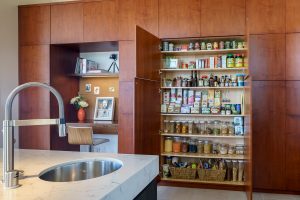To be or not to be(spoke)
‘Bespoke’ is one of those phrases that you see everywhere – it started with tailor made suits and shoemaking and has spread to bespoke holidays, bespoke furniture, bespoke software and of course bespoke kitchens. A 2016 The New York Times article described a satirical video about bespoke water and observed:

The B word has become an increasingly common branding lure...
In a sense the term is now used to imply something created, collated or designed specifically for someone as opposed to off the shelf. With kitchens that distinction gets a bit confusing.
For the masses
Mass Produced Kitchens are typically made in advance of purchases on pre set factory lines with standardized sizes, limited colours and a range of drawers units, base and wall units and tall units and worktops. Typically the sizes and shapes available maximise the cost efficiency of production. More and more shops are offering a greater selection and most now offer help with layouts. And that’s where the use of the term bespoke starts to creep in. Some people say that by mixing and matching these choices you are creating a bespoke kitchen.
Other kitchen companies promote themselves as Bespoke. They offer mass produced kitchens but will also make pieces to order. Often these pieces are significantly more expensive than the mass produced as it’s a different process because they can’t be made on the main production line.
Truly Bespoke Kitchens are those where the maker (or kitchen designer) works with the client to make pieces that suit the client, their taste, their property and they way they want to live. A bespoke kitchen doesn’t have to be significantly more expensive than a mass produced one. A maker who always makes each project to order can just as easily cut make a cabinet that is 611mm as one that is a standard 600mm.
Bespoke cabinetry lets you maximise storage, deal with any awkward spaces and makes it easier for you to achieve unique project.



Sorry, the comment form is closed at this time.